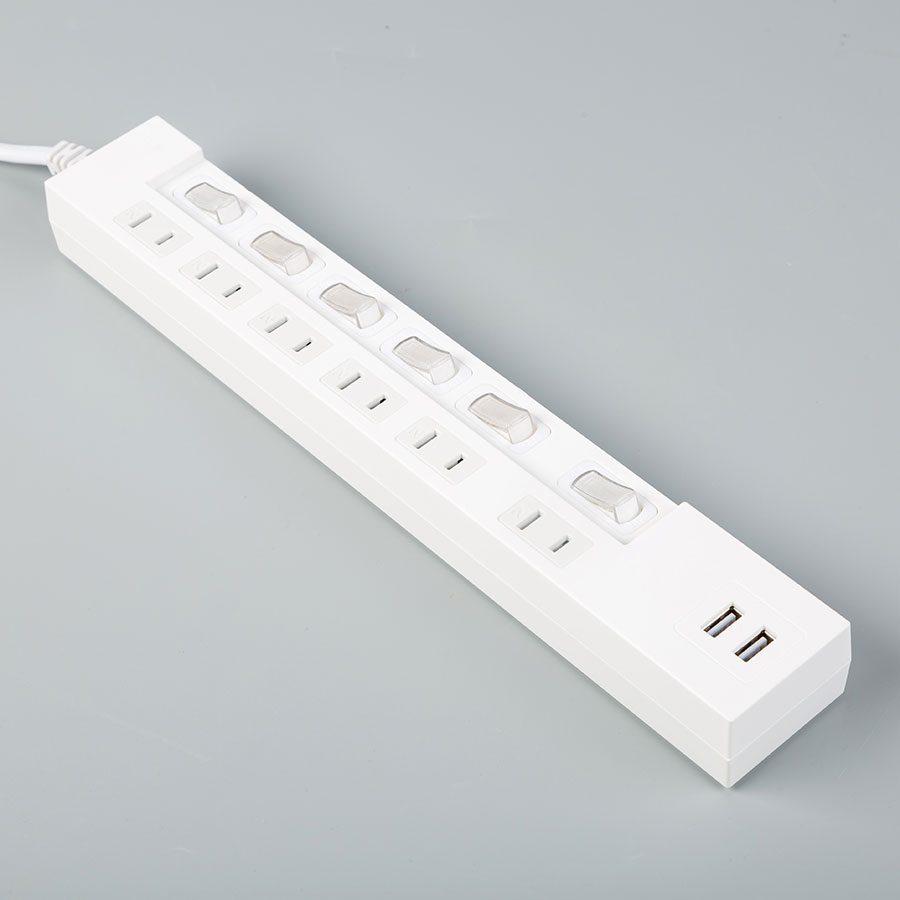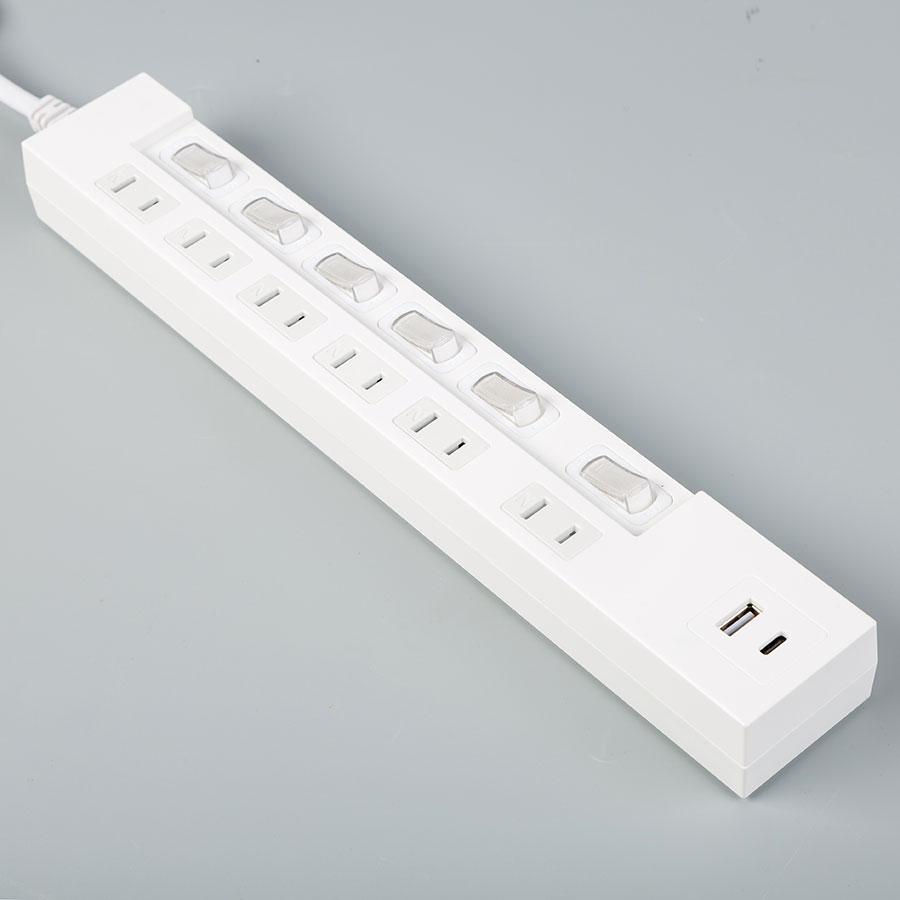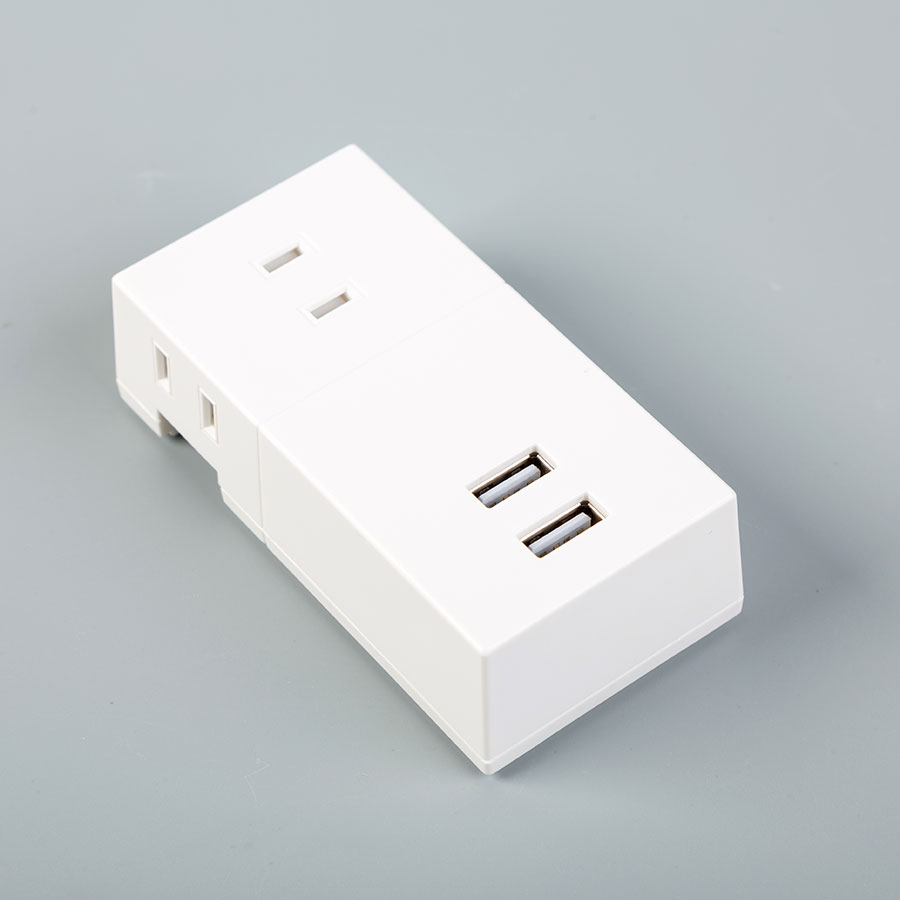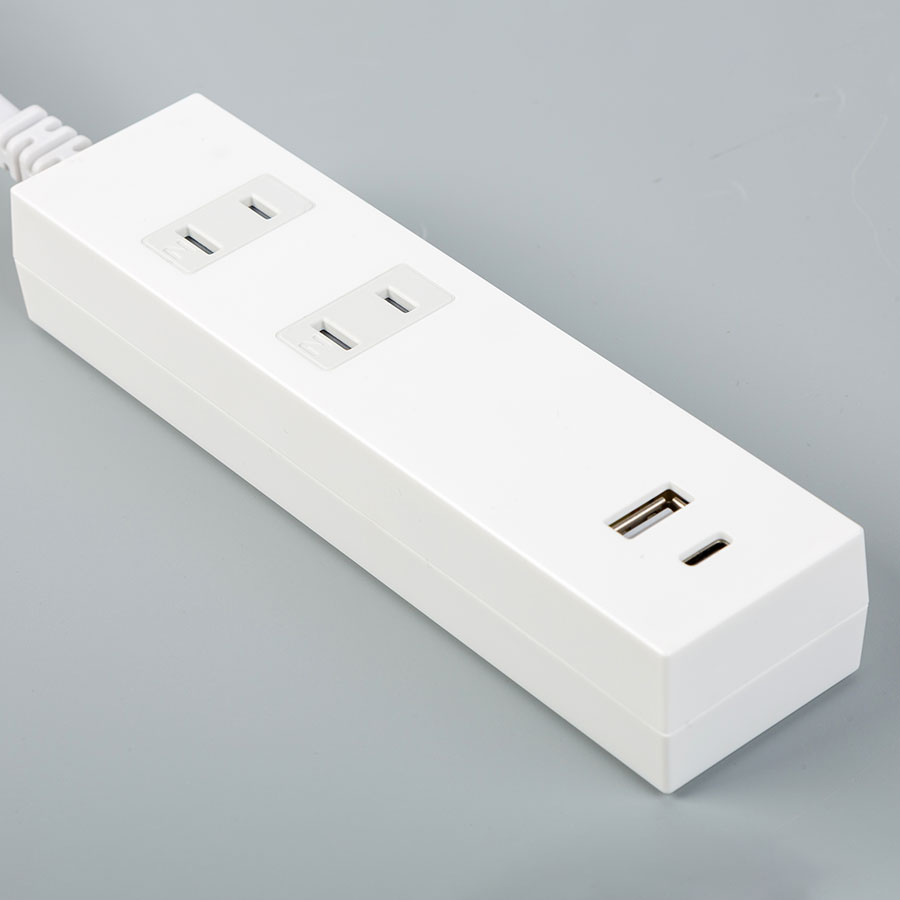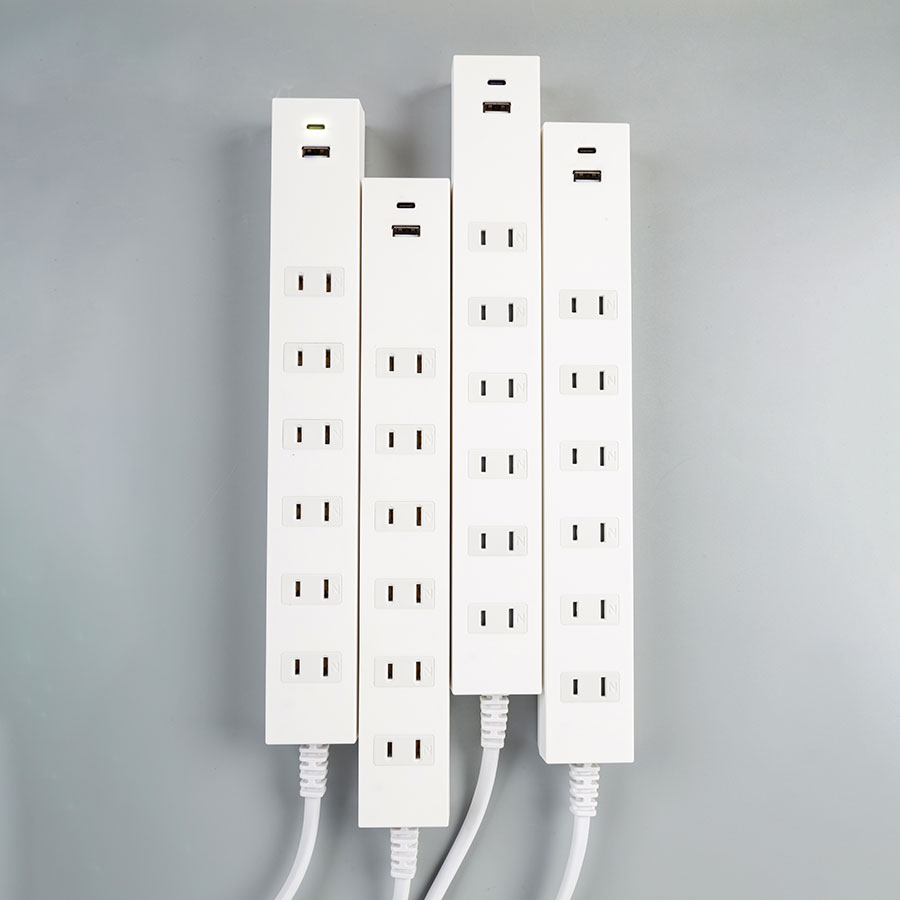
Products
6-Outlets Power Strip Surge Protector with Individual Outlet Switch, 1/2/3M Flat Plug Extension Power Cord, 15A Circuit Breaker
Features
- *Surging protection is available.
- *Rated input: AC100V, 50/60Hz
- *Rated AC output : Totally 1500W
- *Rated USB A output: 5V/2.4A
- *Total power output of USB A: 12W
- *Protective door to prevent dust from entering.
- *With 6 household power outlets + 2 USB A charging ports, charge smartphones,tablet etc. while using the power outlet.
- *We adopt tracking prevention plug.Prevents dust from adhering to the base of the plug.
- *Uses a double exposure cord.Effective in preventing electric shocks and fires.
- *Equipped with auto power system. Automatically distinguishes between smartphones (Android devices and other devices) connected to the USB port, allowing optimal charging for that device.
- *There is a wide opening between the outlets, so you can easily connect the AC adapter.
- *1 year warranty
Certificate
PSE
Keliyuan manufacturing process for power strip
1.Design: The first step is to design the power strip according to the customer's requirements and specifications, including the number of sockets, rated power, cable length and other characteristics.
2.Build prototypes and validate and modify, until the validation is OK.
3.Send samples to the certification house for necessary certification.
4.Raw materials: The next step is to procure the required raw materials and components, such as copper wires, molded plugs, surge protection devices, and plastic housings.
5.Cutting and Stripping: The copper wire is then cut and stripped to the desired length and gauge. 4. Molded Plugs: Molded plugs are installed on wires according to design specifications.
6.Surge protection:A surge protection device can be installed to increase safety.
7.Mass production samples re-checking before the formal mass production
8.Assembly: Assemble the power strip by connecting the socket to the plastic housing, then connecting the wires to the socket.
9.QC Test: The power board then undergoes quality control testing to ensure it meets electrical safety, durability and functionality standards.
10.Packaging: After the power strip passes the QC test, it will be packaged with appropriate packaging materials, boxed, and put into storage for delivery to distributors or retailers.
These steps, if done correctly, will result in a high quality electrical panel that is durable, efficient and safe to use.

